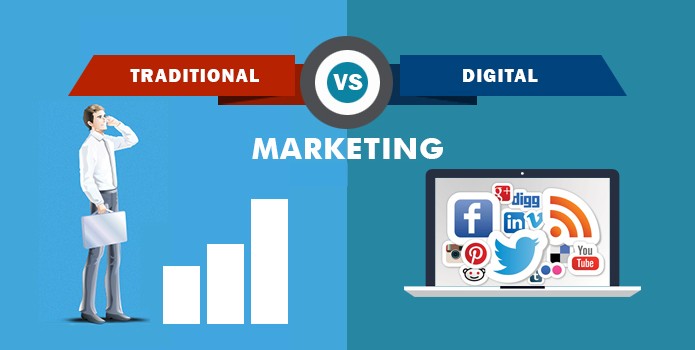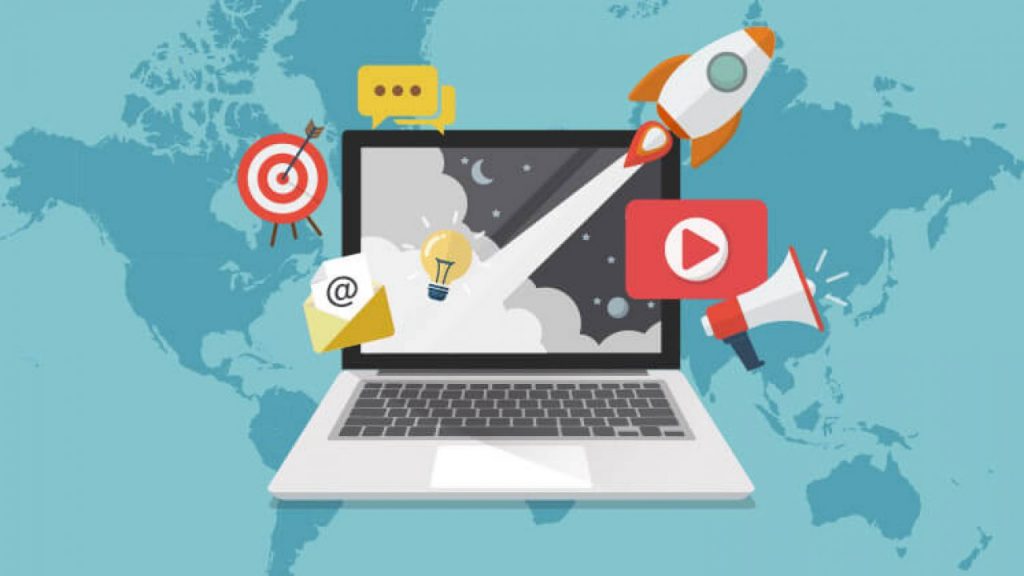Difference Between Digital And Traditional Marketing

Here we have a look at how digital marketing differs to traditional methods of communicating to your customers.
Advances in technology have contributed to dramatic changes in the way many businesses promote products and sell services. If you’re still heavily reliant on traditional techniques, you may be missing out on the chance to increase sales, raise brand awareness and reduce costs. Here are some key differences between traditional and digital marketing.
Digital marketing vs traditional marketing?

The primary difference between digital and traditional marketing is the way in which campaigns are delivered. Rather than using word of mouth and print advertising, forward-thinking small businesses can utilise methods such as SEO (search engine optimisation), social media, PPC and email marketing to expand their reach, connect with web users and build strong, lasting relationships with customers. Today, there are over 4 billion Internet users in the world, and research suggests that over 80% of consumers now visit at least one website before making a purchase.
By working with digital marketing experts to design and implement a targeted strategy, a national or local business could enjoy the following benefits:
Reach out to a much wider audience in a matter of seconds at a fraction of the cost of traditional marketing campaigns. As well as offline marketing offering very limited reach in comparison to online techniques, you can also utilise digital tools and features to narrow down your audience to improve the quality of your leads to increase conversion rates. This is key for small businesses trying to cut costs.
Engage with customers and enhance your brand image and reputation: over 74% of consumers now follow at least one brand on social media and 67% have bought a product after seeing it featured on a social network. Offline marketing offers very few options for staying in touch, and most people now prefer to contact businesses online.
Create a buzz: marketers have the potential to attract a huge amount of attention and generate hype using emails, social media posts and tailored website content. Videos, guides and images can go viral in an instant. Videos are particularly effective for product promotion and brand awareness. More than 90% of mobile users will share a video with others. Traditional marketing is less likely to have the impact of digital marketing, with the average consumer spending more and more time on a smartphone or tablet. High-impact strategies, for example, print and TV adverts, are often too expensive for businesses on a budget.
Analyse your performance: with analytics, you can track digital campaign progress in real-time, lower costs and boost ROI. There is no way of analysing results continually with offline and print media, and it can take months to collect useful data.
Compete: most businesses are now using digital marketing strategies. If you don’t move with the times and embrace consumer trends, you could lose out. According to HubSpot, 88% of people who conduct a local search on their mobile phone will either call or visit a store within 24 hours.
Summary
Digital marketing offers an array of advantages over traditional techniques for a small business looking to attract customers, lower costs and increase sales.





